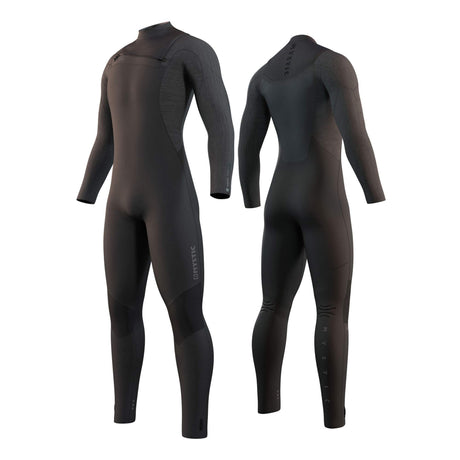The wetsuits are essential pieces for surf lovers, as they provide thermal protection and allow you to enjoy the waves in various conditions. However, choosing the right wetsuit can be overwhelming, considering the multiple options available on the market. In this guide, we will provide you with useful information to help you select the perfect wetsuit.
Types of wetsuits
There are different types of wetsuits, each designed to meet specific needs. The most common suits are the fullsuit, with long sleeves and full legs, which provide total coverage and are ideal for cold waters. On the other hand, short-sleeve and short-leg suits (springsuits) are more suitable for temperate waters or when you prefer greater freedom of movement. However, one of the most important factors to consider is the thickness of your wetsuit
How to choose the thickness of neoprene?
The thickness of the neoprene It is a crucial factor to consider when choosing your suit. The thickness will determine the thermal insulation capacity and comfort in different water temperature conditions. Neoprene suits typically range from 2 mm to 6 mm in thickness.
To select the right wetsuit, it is important to consider the water temperature. For example, in cold waters, such as in winter, the thickness of the wetsuit it should be 5-6 mm in the torso and 4-5 mm in the extremities to provide optimal insulation. In warmer waters, the thickness of the wetsuit can be 3-4 mm in the torso and 2-3 mm in the extremities will be sufficient to maintain a comfortable temperature.
Surf suit seams
The seams of the suit just like the thickness of the wetsuit they are important factors to consider, as they affect the durability and water resistance of the suit. The glued and sewn seams offer excellent water resistance, preventing leaks. On the other hand, flat or sealed seams provide greater flexibility and comfort, but may allow a small amount of water into the suit.
Neoprene with zipper and without zipper
The suits of neopreno They can have zippers at the back, front, or be zipperless. Suits with a back zipper are the most common and easiest to put on. Suits with a front zipper offer greater flexibility and prevent water from entering through the back. Zipperless suits are highly flexible but can be more difficult to put on.
Also take into account that the thickness of a wetsuit It does not directly determine the ease or difficulty of removing it. The thickness of the neoprene refers to its thickness and is mainly related to thermal insulation capacity.
In contrast, the ease of removing a wetsuit depends more on other factors, such as the fit of the suit, the flexibility of the neoprene, and the presence of these zippers or additional closure systems.
Complementary items for the wetsuit
In addition to the wetsuit itself, there are accessories that can enhance your experience in the water. Some of these include gloves, surf booties and neoprene caps. The thickness of the neoprene in these accessories will determine the protection of the extremities and the head from the cold, allowing you to enjoy longer surfing sessions.
It is for this reason that, when choosing a wetsuit, consider the thickness of the wetsuit suitable according to the water temperature, the seams, the type of zipper, the base layer, and additional accessories. Remember that each surfer has individual preferences, so it is important to try different options and find the suit that fits your needs perfectly. Now that you have this information, enjoy your surfing sessions with comfort and protection.



